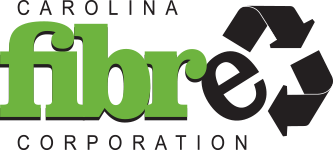 With an entire new year ahead of you, decluttering your home may not seem so hard. But after January, when that fresh, new year energy begins to wane, the prospect of taking on a big clutter tackling project tends to overwhelm. But whether it’s a plan to deep clean (aka, Kondo your life), or simply a new-year-new-you approach to simplicity, a good purge doesn’t always have to be a chore. More importantly, it doesn’t need to take up space in landfills. So what do you do with all of the stuff that doesn’t spark joy? There are four main ways to dispose of your stuff, and thrift stores can’t handle all of it. So here’s how to donate, recycle and re-sell all that stuff effectively.
With an entire new year ahead of you, decluttering your home may not seem so hard. But after January, when that fresh, new year energy begins to wane, the prospect of taking on a big clutter tackling project tends to overwhelm. But whether it’s a plan to deep clean (aka, Kondo your life), or simply a new-year-new-you approach to simplicity, a good purge doesn’t always have to be a chore. More importantly, it doesn’t need to take up space in landfills. So what do you do with all of the stuff that doesn’t spark joy? There are four main ways to dispose of your stuff, and thrift stores can’t handle all of it. So here’s how to donate, recycle and re-sell all that stuff effectively.
Clothing.
After you’ve purged your closet, there are a few different steps you might want to take before hauling everything off to the donation center. If you have some name-brand items, you might be able to sell them on sites like Poshmark or LePrix. They don’t accept all items at all times, but it’s at least worth looking into if you are trying to make a few bucks. For donations, in addition to organizations like the Salvation Army and Goodwill, Dress for Success is a non-profit that provides women with professional attire.
Before you make a trip to the thrift shop, keep in mind that donation centers aren’t trash bins for your ripped or stained gear. However, don’t forget that you can recycle pretty much anything. You can repurpose old t-shirts as cleaning cloths or turn them into a fun DIY craft project. Contact local animal shelters to see if they are accepting old clothes, particularly linens. Stores like Levi’s and H&M recycle certain types of garments for customers and will even offer in-store discounts. You can also search for green clothing drop-offs in your area, which will try to recover as much usable cloth as possible from your cast-offs.
Books and paper.
Paper, of course, can be recycled. And to cut back on paper clutter in the new year, call the companies sending you catalogs you no longer want, and cancel subscriptions you don’t actually read. Switch your bills and bank notifications to auto-pay and e-statements.
Books are a bit trickier. You have more options and can potentially make some money. Try the online companies like BookScouter, Amazon, and Bookfinder. You input the book’s ISBN and it will compare buyback vendor options for you. Other ways to sell are by posting on Craigslist and Facebook. Don’t forget to check out your local used bookstore as well. Guidelines differ from store to store, but generally, you can just bring in your old books and they’ll buy them from you. You can declutter your life and make a little money at the same time. If you aren’t having much luck with the sale, you can always donate and recycle.
Miscellaneous stuff.
Miscellaneous, or “komono” in Kondo’s world, includes a lot of stuff. If you’re purging tech items clear all your data and delete all your accounts. Furniture is a bit more difficult. If it’s still in good condition you can always sell or donate. If you can’t transport it yourself, there’s always Craigslist or companies that pick up donations from your home. For old toys, go beyond the usual suspects like the Salvation Army and Goodwill and call your local children’s hospital, doctor’s office, daycares, children’s shelters, and churches. All are likely to be in need of certain types of toys and entertainment options (check for recalls before you donate any items). Online communities on Facebook and the Freecycle Network may also be helpful.
If you are still struggling to get rid of some stuff always consider a recycling corporation like Carolina Fibre for your old stuff that no longer sparks joy. We hope this post has given you some new ideas for recycling your old stuff. If you liked this post, follow us on Facebook for more helpful tips and tricks. And if you have any questions about recycling, contact us today!
